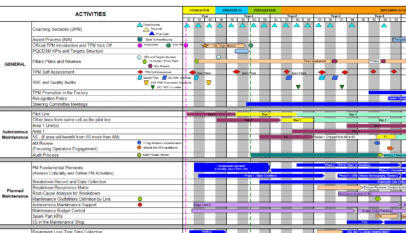The ISO 9001 Map: Your Path to Quality Excellence
Implementing ISO 9001 can feel overwhelming without a structured approach, but this ISO 9001 Map simplifies everything into actionable steps. Whether you’re working to maintain your certification or kick-start compliance, this guide breaks it all down into three core areas: Quality System Documents, Annual Maintenance, and Continuous Activities.
By following this map, your organization will stay compliant, improve processes, and ensure a culture of continuous improvement.
1. Quality System Documents: Your Foundation for Success
To maintain compliance with ISO 9001:2015, you need proper documentation. These quality system documents are the foundation of your organization’s Quality Management System (QMS).
Key Quality Documents:
These documents outline critical policies, assessments, and structures:
- Context Analysis: Analyze interested parties and internal/external issues
- Risk-Opportunities Assessment: Identify potential risks and opportunities
- Scope of the QMS: Define the coverage of your Quality Management System
- Quality Policy: The cornerstone of your commitment to quality
- Organogram: Define organizational structure and responsibilities
- QMS Document List: Maintain an updated list of all documents
Procedures and Forms:
ISO 9001 emphasizes documentation to ensure processes are consistent and repeatable. Key procedures include:
- Document Management Procedure
- Audit Procedure
- Objectives, KPIs, and Targets Management
- Management of Change Procedures
- Customer Satisfaction Surveys and Trackers
- Competency and Training Management
- Annual Quality Meeting and Management Review Templates
Why It Matters:
Documented processes ensure clarity, accountability, and adherence to standards. They create a foundation for audits and performance improvement.
2. Annual Maintenance: Keeping Your Quality System on Track
ISO 9001 compliance isn’t a one-time achievement. Annual maintenance ensures that your QMS remains effective and evolves with your organization.
January: Plan Your Year
Kick off the year with your annual quality meetings. Plan objectives, targets, and KPIs for the year ahead.
Early February: Internal Audits
Internal audits ensure compliance and identify areas for improvement. Key updates include:
- Context Analysis and Risk-Opportunity Assessment
- Provider Evaluations: Assess supplier performance
- Customer Satisfaction Evaluations: Gather and act on client feedback
- Objectives and KPIs: Ensure goals remain realistic and aligned with your strategy
Late February: Management Review
Hold a formal management review to evaluate the QMS’s effectiveness. Use internal audit findings, risk assessments, and customer feedback to drive improvements.
Why It Matters:
Annual maintenance ensures your QMS adapts to organizational changes, improves year-over-year, and continues meeting ISO 9001 requirements.
3. Continuous Activities: Sustaining Excellence
ISO 9001 is built on the principle of continuous improvement.
Key Continuous Activities:
- Update Procedures: Processes and procedures evolve; keep them current and aligned with ISO 9001 standards.
- Track Nonconformities: Nonconformity management is critical for identifying gaps and preventing future issues. Use a “Nonconformity Tracker” to document and resolve any deviations from your QMS.
Why It Matters:
Sustaining continuous improvement drives efficiency, reduces risk, and ensures long-term compliance. Small, ongoing changes add up to significant improvements over time.
Why Follow the ISO 9001 Map?
The ISO 9001 Map simplifies what could otherwise be a complex process. By focusing on clear documentation, annual maintenance, and continuous activities, your organization can:
✅ Maintain compliance effortlessly
✅ Improve operational efficiency
✅ Foster a culture of accountability and continuous improvement
Each step outlined in this map is a building block for success, ensuring that ISO 9001 becomes a tool for growth, not just a certification to achieve.
Complete template pack can be downloaded here: https://zbk.li/ISO9001



















